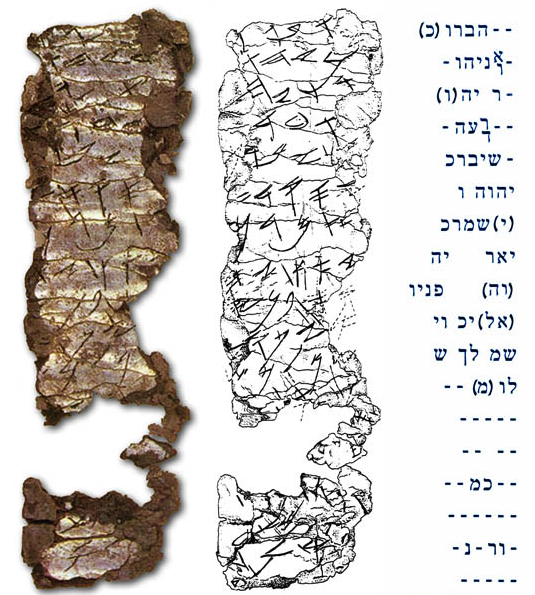The two pieces of silver amulet scrolls found in 1979 in Ketef Hinnom were not just another discovery. These exceptional artifacts contain texts of Hebrew script culled from the sacred scripture of the Old Testament, the oldest copy ever discovered.

In 1979, archaeologist Gabriel Barkay and his grade school students undertook excavation just outside the St. Andrews Church at the ancient funeral site Ketef Hinnom, Jerusalem.
Describing the length and width of the silver amulet scrolls, Jeremy D. Smoak, a Hebrew Bible scholar, said the first amulet was one inch long and 0.4 inches in diameter. When unrolled, the scroll was 3.8 inches long and one inch wide. The second amulet was smaller at half-inch in height and 0.2 inches in diameter but when unrolled was 1.5 inches long and .4 inches width.
Barkay said it took them three years to unroll the larger scroll. In in they found 100 words in 19 lines written in the Paleo-Hebrew alphabet.
In 1994, researchers of the West Semitic Research Project-University of South Carolina took high-resolution photos of the silver scrolls inscription for evaluation and deciphering.
Barkay said they found “delicately scratched characters” in the silver scrolls. The first word they could decipher was ‘YHWH’. In its anglicized form, YHWH is the same as ‘Jehovah’. Both are the names of the Lord in the Hebrew Bible.
Bible scholars agree that the writings in the silver amulet scrolls refer to the priestly blessing written in Numbers 6:24-26. It says: “The Lord bless thee and keep thee; the Lord make His face shine upon thee and be gracious unto thee; the Lord lift up His countenance upon thee and give thee peace.”
For Smoak, the silver scrolls describe the divinity of Yahweh and correspond to what Old Testament books Deuteronomy 7:9, Nehemiah 1:5, and Daniel 9:4 declare. He said the first amulet spoke of “Yahweh as the one who shows graciousness to those who love him and keep his commandments.”
Barkay said these verses came first, approximately four centuries before the Dead Sea Scrolls. “They are the only biblical verses we have from the time of the First Temple period,” he said, believing these verses existed during the time of King Josiah and Prophet Jeremiah.
Smoak’s other analysis on the silver scrolls refers to the practice of Iron Age Jews to mix paganism and Judaism. Historically, the ancient Jews imitated the pagans’ use of amulets and charms believing these would shoo away evil or attract blessings using God’s words.
He adds the miniature writings in the silver scroll were not intended to be read, but to be worn like a necklace. The ancient Jews believed that the benediction written in the scroll would work like magic and become part of the wearer’s body. This belief contradicts Yahweh’s command.
There can be endless discussions and realizations on why the two silver scrolls were found. For now, the most significant is its use in dating the Old Testament, and in serving as evidence that the first five books of the Old Testament were truly ancient.

